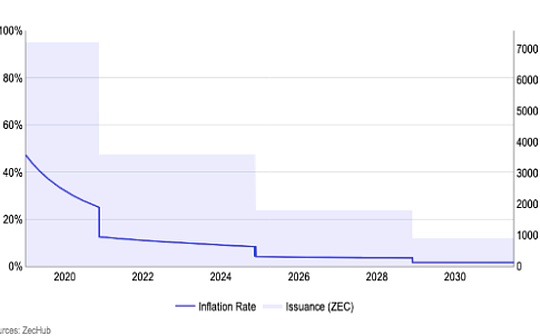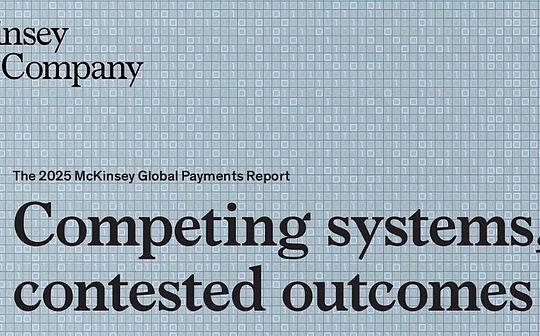
Financial market turmoil returns
On this ordinary Friday, October 17, 2025, the global financial market was shrouded in layers of haze.The liquidity shortage problem is becoming increasingly severe, the pressure on the repo market continues to escalate, and the SOFR (Secured Overnight Financing Rate) spread has reached a new high since 2019.At the same time, bank stocks, especially regional bank stocks, suffered heavy losses, raising concerns about potential credit events.This is not just an isolated bank problem, but a signal of a liquidity crunch across the financial system.
The current market environment is reminiscent of the repo market crisis in 2019 and the regional banking crisis in 2023.At that time, liquidity shortages caused short-term funding costs to soar, exposing the fragility of the banking system.Now, similar signs are emerging again: the weekly difference between SOFR and reverse repo has reached its peak since July 2019, and SOFR even exceeds the Fed’s discount window rate (discount window rate) by 5 basis points.This shows that the shift from excess to shortage of US dollar liquidity has become a reality.The plunge in bank stocks further amplified this concern, especially the collapse of the stock prices of regional banks such as Zions Bancorporation and Western Alliance Bancorporation, with the single-day decline setting a record since the regional banking crisis in 2023.
1. Turmoil in the banking sector—reappearance of regional banking crisis?
Recent data shows that the banking sector is experiencing severe volatility, which is the starting point of this market turmoil.
Regional banking institutions tend to be more vulnerable to economic downturns due to their heavy reliance on commercial and industrial lending, consumer lending, and commercial real estate (CRE) exposure.Take Zions Bancorporation, a Utah-based bank whose core business is commercial and industrial lending.Recently, the bank disclosed a $50 million bad debt write-off involving two allegedly fraudulent loans and filed a lawsuit to recover $60 million.Broader concerns lie in consumer lending challenges and CRE exposure.As we all know, the commercial real estate market has continued to weaken since 2020, and the high interest rate environment has led to an increase in vacancies in office buildings and retail properties and a decline in rental income.The case, which saw Zions’ share price plummet in a single day to its highest level since the regional banking crisis in 2023, is not limited to an isolated incident but reflects the fragility of the entire industry.
Phoenix-based Western Alliance Bancorporation is facing a similar dilemma.The bank is highly dependent on non-deposit financing institution (NDFI) loans and has exposure to the auto and consumer sectors.The weak consumption of low-income groups (lower class of K-shaped economy) directly affects the quality of these loans.The bank recently disclosed allegations of fraud against borrowers involving First Brands and Ricoh, and filed more than $100 million in lawsuits.While the bank kept its outlook for 2025 unchanged, the NDFI loan portfolio is facing scrutiny over rising bad debts.The difficulties of the two major banks are not accidental, but the product of increasing economic polarization: high-income groups benefit from rising asset prices, while low-income groups suffer from inflation and unemployment pressures.
The turmoil at regional banks has begun to spread to larger banks.Data on October 16 showed that Citigroup fell 3.5%, Capital One Financial Corporation fell 5.5%, Goldman Sachs fell 1.3%, and JP Morgan Chase fell 2.3%.While large banks have higher capital adequacy ratios, they are not immune.Institutions like Capital One specialize in low-credit-score loans and, like regional banks, are vulnerable to consumer defaults.The single-day decline of KRE (Regional Bank ETF) set a record since 2023, second only to the “Liberation Day” in April 2023.
To quantify this risk, look at the credit spread indicator.The ratio of LQD (Investment Grade Corporate Bond ETF) to HYG (High Yield Corporate Bond ETF) is an effective proxy for high frequency monitoring of credit spreads.An increase in the ratio indicates the preference for investment-grade bonds relative to high-yield bonds, reflecting expanded credit risk.The real benchmark is the BofA High Yield Options Adjusted Index, but it is updated less frequently daily.Currently, the LQD/HYG ratio shows that credit spreads are widening, indicating that bad debt write-offs may affect bank profitability and solvency.
Even more worrying are regional banks’ ties to private credit.The private credit market has exceeded one trillion dollars, and many regional banks participate through loans or investments.If bad debt is contagious, it could trigger a chain reaction.JPMorgan CEO Jamie Dimon calls it the “cockroach problem,” the idea that one bad debt often indicates more hidden problems.This is not limited to banks, but may also affect the broader equity market.In view of this, S&P 500 futures fell sharply in early trading. Although they recovered, it showed that market confidence was shaken.
Looking back at history, the regional banking crisis of 2023 (the collapse of Silicon Valley Bank, Signature Bank, and First Republic) stemmed from bond losses and deposit outflows caused by rising interest rates.Today, as the high interest rate environment continues and the liquidity crunch intensifies, similar risks have resurfaced.As a result, the stock prices of KRE, Zions and Western Alliance, as well as credit spreads, have attracted much attention.If bad debts continue to be exposed, the stability of the banking system will be tested.
2. Pressure on the repurchase market escalates—SOFR spread hits record high
The repo market is the core battleground for liquidity shortages.Repurchase agreements (repos) are short-term financing instruments in which banks and institutions borrow funds through collateralized securities, such as U.S. Treasury bonds or mortgage-backed securities.SOFR is the benchmark for the repo rate, which reflects the cost of overnight secured funding.
This week, the weekly difference between SOFR and reverse repos reached the highest level since July 2019, which is only 1 basis point higher than last week, but the trend is clear: liquidity is turning from abundant to scarce.SOFR has exceeded the Fed’s discount window rate by 5 basis points, which is a rare phenomenon that usually only occurs at the end of a quarter or year.But these are not the times now, and there are no tax deadlines or window-dressing factors at play.
On October 16, the Federal Reserve’s Standing Repo Facility (SRF) was utilized at US$8.35 billion, which was a signal that the emergency backstop was activated.SRFs allow institutions to borrow funds against Treasury bonds or MBS (mortgage-backed securities).It is worth noting that in this use of SRF, MBS accounts for a higher proportion, rather than treasury bonds.This may hint at weakness in the MBS market, similar to the liquidity crisis during the 2020 epidemic.
To make this shift easier to spot, look at the reverse repo minus the SRF.The indicator turned negative for the first time since 2020.The reverse repo is a “storage tank” that stores excess dollars; the SRF is an “emergency faucet” that provides scarce dollars.A negative difference indicates that the system is moving from surplus to shortage.
The Fed attempts to control the repo market through an interest rate corridor: the discount window rate (4.25%) serves as the upper limit, and the reverse repo bonus rate (4%) serves as the lower limit.Currently, as in late 2020 and 2024, the difference between SOFR and the Fed Funds rate is surging on the daily chart.However, SOFR has exceeded the upper limit, indicating an imbalance between market supply and demand.
Repo market crises are nothing new.In September 2019, the repo rate surged to 10%, and the Fed quickly intervened to inject reserves by purchasing Treasury bonds and MBS.The weekly chart doesn’t even capture the 2019 crisis because of its brevity and the swiftness of the Fed’s response.Now, if pressure persists, the Fed may restart a similar operation: printing reserves and pumping them into the system.But there’s something unique about the current crisis: It’s not driven by quarter-ends, but by structural shortages.The SOFR weekly difference hit a new high in March 2019, indicating a deeper problem.
3. Macro causes of liquidity shortage—double squeeze from fiscal and monetary policies
The liquidity shortage is not sudden, but the cumulative result of multiple factors.The main drivers include huge fiscal deficits, TGA reconstruction, reverse repo exhaustion and quantitative tightening.
First, the size of the U.S. fiscal deficit is staggering.The current deficit accounts for 7% of GDP, which is unprecedented in non-recession or non-war periods.From a 2% surplus in 2001 to a 7% deficit today, the deficit has expanded procyclically.This means that the government needs to issue bonds equivalent to 7% of GDP every year, and the bond market purchases the same amount in US dollars.This drains liquidity from the system, especially in a high interest rate environment.Secondly,Treasury General Account (TGA) from $300 billion to $810 billion, meaning $500 billion was removed from the financial system.This is directly reflected in bank reserves falling to around $3 trillion.Third, the reverse repo’s “buffer” is empty.In the summer of 2023, when then-U.S. Treasury Secretary Yellen rebuilt the TGA, there was a buffer of US$1.8 trillion in reverse repurchases; now, it is almost zero, unable to absorb liquidity shocks.Fourth, the Federal Reserve’s quantitative tightening (QT) continues to reduce its balance sheet and reduce bank reserves.Instead, quantitative easing (QE) injects reserves through the purchase of Treasuries and MBS.After the repurchase crisis in 2019, the Fed immediately restarted QE; now, if SOFR remains high, similar intervention may be inevitable.
These factors combined to create a dollar shortage.Although the unemployment rate is low, the deficit has not improved accordingly, indicating policy imbalance.The K-shaped economy intensifies differentiation: the upper class benefits while the lower class struggles, affecting consumer loans and CRE.
Regional bank problems and repo market stress are no coincidence.The liquidity crunch increases financing costs and amplifies the risk of bad debts.Although the specific mechanism needs further study,The two are intuitively related.
4. Potential Risks and Market Outlook—Beware of Credit Event Contagion
Current developments portend multiple risks.
First, credit events may occur.If bad debt write-offs continue, the solvency of regional banks will be compromised, triggering deposit outflows and stock price crashes.In the 2023 crisis, a record three banks failed; now, similar signs are emerging.Secondly, it spread to private credit and the broader credit market.The widening of credit spreads (rising LQD/HYG) reflects deteriorating liquidity and rising default risk.Credit spreads are not only a liquidity indicator but also measure differences in credit risk.Investors can monitor the spreads between U.S. Treasuries and investment-grade/high-yield bonds.Third, equity market volatility has intensified.S&P 500 futures fell sharply in early trading, a sign of wavering confidence.If liquidity shortages persist, stocks could pull back further.
Policy response is key.The Fed may end quantitative tightening and restart quantitative easing to inject reserves.The U.S. Treasury Department can adjust TGA management to release liquidity.However, in a high inflation environment, easing policy must be cautious.
The shortage of liquidity and the intensifying pressure on the repurchase market, combined with the plummeting of bank stocks, constitute the core challenge of the current financial market.This is not only a technical problem, but also the product of macro policy imbalance.Based on historical lessons, the Federal Reserve needs to respond quickly to avoid escalating the crisis.Investors should strengthen risk management and monitor key indicators.








